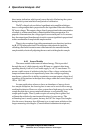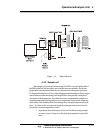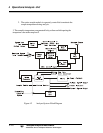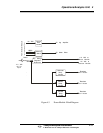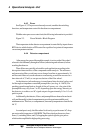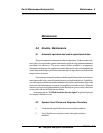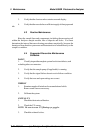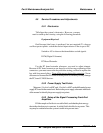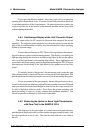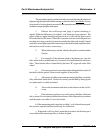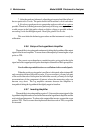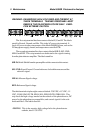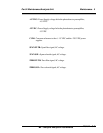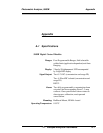
5 Maintenance Model 5000B Photometric Analyzer
5-4: Part II
Teledyne Analytical Instruments
If you open the detector module, keep stray light out by covering the
opening with a dense black cloth. If you do not take this precaution, the result
is a misinterpretation of the scope patterns. On general-purpose systems, the
scope test points are in the bottom of the detector module and are accessible
without opening the module.
5.5.4 Oscilloscope Display of the I to E Converter Output
The output of the I to E Converter is observed at the output of the second
amplifier. The objective of this operation is to set up the optical system and the
gain of the second amplifier in such a way that the analyzer keeps operating
within its dynamic range.
Connect the oscilloscope to TP3. The oscilloscope displays the measur-
ing and reference pulses in an alternating pattern. The display is created by the
light passing through the reference and measuring filters as they are brought in
and out of the light beam by the rotating filter wheel. These light pulses are
converted to electronic energy which is amplified and brought to TP2. The base
line represents the blocking of the light beam by the opaque part of the filter
wheel.
To identify which of the pulses is the measuring peak, insert the span
filter (when present) or a piece of flat glass or clear plastic in the light beam. The
peak that becomes the shortest (retracts excessively) is the measuring filter pulse.
In case you cannot set the gain properly, because the peaks are too short,
too tall, or too much out of balance, adjust R2 trimpot on the converter PC board
until you obtain the desired peak height as observed on the scope (usually 8 to
9 volt) for the tallest of the two peaks. Never leave the system operating with
peaks exceeding 10 volts or you may saturate the logarithmic amplifier. You
should not permit oscillations or distortions in the peaks.
5.5.5 Balancing the Optics for Equal Light Transmission
with Zero Fluid in the SAMPLE CELL
The objective of this procedure is to obtain measuring and reference
peak heights as displayed on the oscilloscope that are approximately equal, with
the tallest peaks set at 8 to 9 volts. This must be done with air or zero fluid in
the cell.



